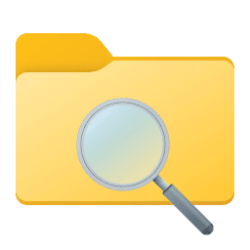This tutorial will show you how to add "Close All Apps" to the desktop context menu for all users in Windows 10 and Windows 11.
Sometimes you may need or want to quickly close all open apps at once instead of one at a time without shutting down or restarting the computer.
While you must be signed in as an administrator to add or remove the "Close All Apps" context menu, all users can use the context menu if added.
The Close All Apps context menu will forcefully close all open apps except File Explorer and Registry Editor, so be sure to save anything open in an app before using the context menu.
EXAMPLE: "Close All Apps" context menu
In Windows 11, you will need to click/tap on Show more options first by default, then click/tap on Close All Apps.
Here's How:
1 Do step 2 (add) or step 3 (remove) below for what you would like to do.
2 Add "Close All Apps" to Desktop Context Menu
A) Click/tap on the Download button below to download the file below, and go to step 4 below.
Add_Close_all_apps_at_once_context_menu.reg
Download
(Contents of .reg file)
Code:
Windows Registry Editor Version 5.00
[HKEY_CLASSES_ROOT\DesktopBackground\Shell\CloseAllApps]
"MUIVerb"="Close All Apps"
"icon"="imageres.dll,-5102"
"Position"="Bottom"
[HKEY_CLASSES_ROOT\DesktopBackground\Shell\CloseAllApps\command]
@="PowerShell -Command \"Get-Process |? {$_.MainWindowTitle -ne \\\"\\\" -and $_.Id -ne $PID -and $_.ProcessName -ne \\\"explorer\\\"} | Stop-Process -Force\""3 Remove "Close All Apps" from Desktop Context Menu
This is the default setting.
A) Click/tap on the Download button below to download the file below, and go to step 4 below.
Remove_Close_all_apps_at_once_context_menu.reg
Download
(Contents of .reg file)
Code:
Windows Registry Editor Version 5.00
[-HKEY_CLASSES_ROOT\DesktopBackground\Shell\CloseAllApps]4 Save the .reg file to your desktop.
5 Double click/tap on the downloaded .reg file to merge it.
6 When prompted, click/tap on Run, Yes (UAC), Yes, and OK to approve the merge.
7 You can now delete the downloaded .reg file if you like.
That's it,
Shawn Brink
Attachments
Last edited:













